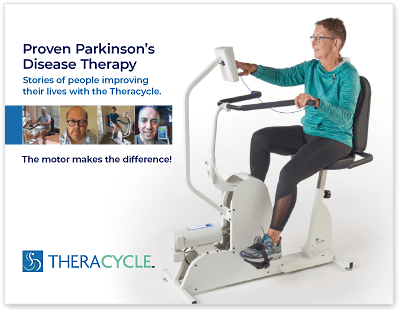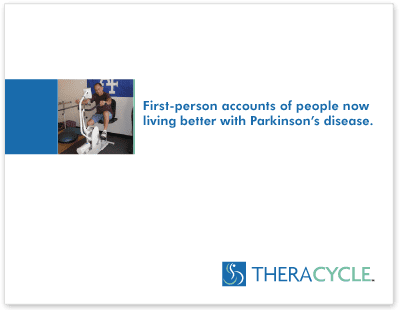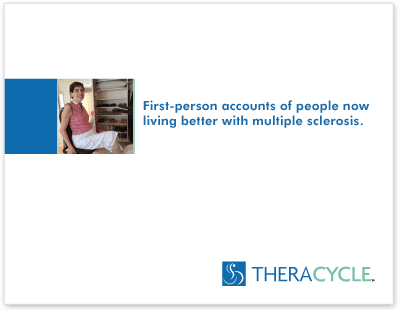- ›
- Stories
- ›
- Parkinson’s Disease
- ›
- Forced Exercise Therapy for Parkinson’s: Maximizing Benefits
Stories
Forced Exercise Therapy for Parkinson’s: Maximizing Benefits

Exercise is a fundamental part of healthy living for people of all walks of life. For people faced with the symptoms of neurological disorders, however, exercise becomes more than a part of healthy living—it becomes a vital feature of the sustainability of their everyday life.
As a physical therapist, it can be difficult to find an exercise or activity regiment that will relieve a particular patient’s symptoms, especially since symptoms can vary dramatically on a case-by-case basis.
It’s well known that “Increasing physical activity to at least 2.5 hours a week can slow decline in quality of life,” but for people with a neurological disorder like Parkinson’s Disease, strenuous physical activity may not be a feasible option. Thankfully, with forced exercise therapy, there is a solution.
If you’re working with a patient who is dealing with physical limitations or symptoms as a result of Parkinson’s Disease or another neurological disorder, then here are a few of the ways you can help them get the most out of their forced exercise therapy:
Use the Right Equipment
Any kind of exercise can prove beneficial to people living with the symptoms of a neurological disorder, but not every type of exercise is accessible to them. If someone has physical limitations, then getting themselves to a gym and on a treadmill or an elliptical may not be an option. In that case, they’re going to need an alternative.
This is where forced exercise equipment like the Theracycle can really make a difference.
With any of the Theracycle models, a patient can exercise from the comfort of their own home and enjoy a safe and productive environment. Theracycle is adaptable to the needs of its users and is specially designed for easy mounting and dismounting. This means that people with limited mobility can still use easily and regularly the product.
Additionally, Theracycle’s built-in motor can help users exercise for longer periods that, due to strength or endurance limitations, wouldn’t be possible otherwise. In a study on PubMed Central® (PMC), we see how “an assisted bicycle pedaling exercise with the cycling rate controlled to be above the voluntary pedaling level” can provide users with the same improvements experienced as a result of medication.
Consistency is Crucial
Just like any treatment, results take time. There’s no “cure” for Parkinson’s Disease and other neurological disorders yet, which means your patients need to be willing to commit to an exercise regiment if they want to see a sustainable improvement of their condition.
In an article in the Chicago Tribune, Daniel Corcos—a professor of physical therapy and human movement sciences at Northwestern’s Feinberg School of Medicine—said that forced exercise therapy “has to be a sustained lifetime commitment.” Just like a pill, he says, “consistency is critical to seeing and retaining benefits.”
Set the Right Expectations
Forced exercise therapy won’t eliminate every symptom of people with a neurological disorder, but it can help alleviate their symptom’s impact on everyday life. When recommending a patient to pursue forced exercise as a form of therapy, be sure that they have the right expectations and understand both the commitment ahead of them and the benefits that commitment is likely to produce.
When using Theracycle’s motorized exercise bike, for example, users can expect to see a variety of benefits, such as:
- Improved gait and balance
- Increased flexibility and posture
- Better endurance
- Refined attention and concentration
- And more!
If you think your patient would benefit from forced exercise therapy, then take the time to make sure that they have access to the right equipment, know what’s required of them, and have the proper expectations in mind. The clearer your patient’s expectations are, the more receptive they’ll be to the results of their hard work.








